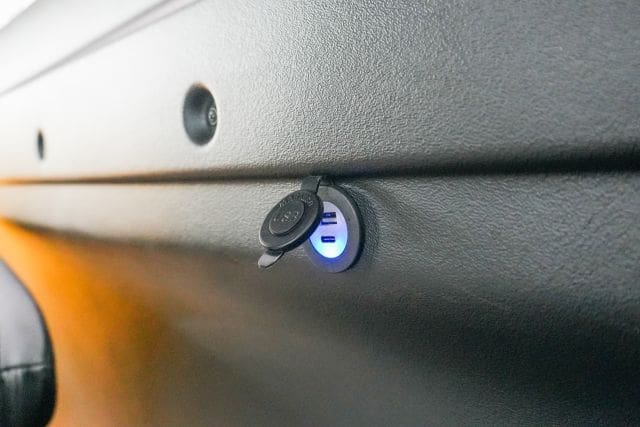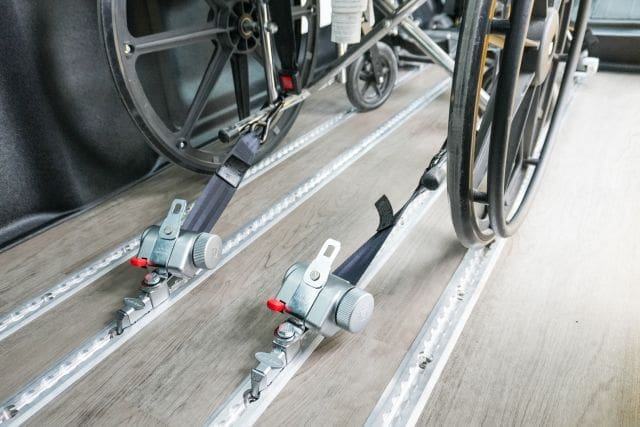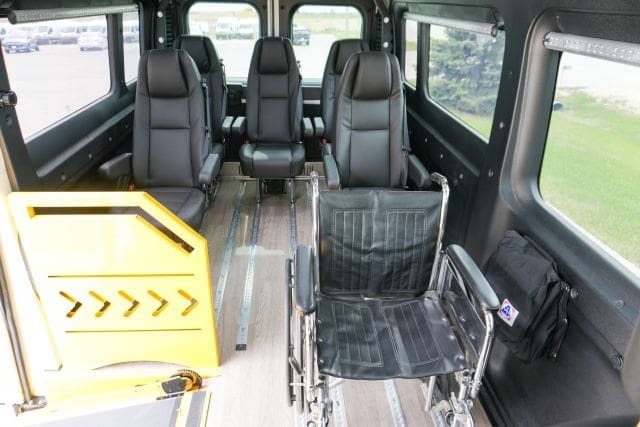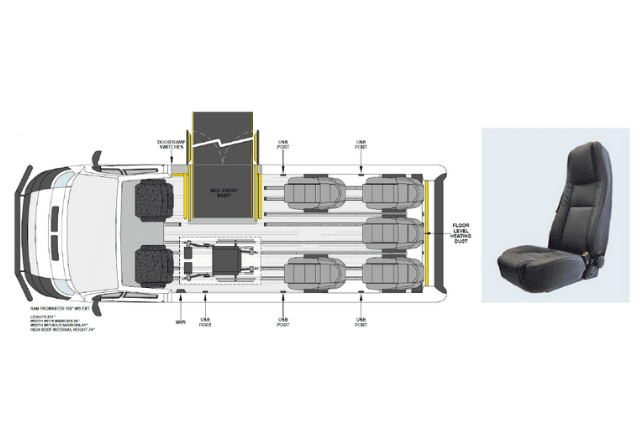Missing just one dialysis session can lead to serious health problems, including hospitalization. Over 800,000 people in the U.S. are living with kidney failure, and many rely on routine dialysis to stay alive. But here’s the real problem. Getting to and from these life-saving appointments isn’t easy. That’s where dialysis transportation becomes so important.
If you’re a business or organization looking to provide transportation for dialysis patients, you’ve likely seen this gap firsthand. Maybe you’ve heard about patients missing treatments because they couldn’t find a ride. Maybe you’ve seen caregivers burnt out, juggling jobs and rides for family members.
You might feel overwhelmed thinking about the cost of running a dialysis transportation program or figuring out the logistics. We get it. That frustration is real. Without a plan to close that gap, lives stay at risk. Your chance to serve your community and grow your organization fades fast.
At AVAN Mobility, we’ve helped groups like yours and Pacific Clinics across the U.S. close that gap. We’ve been in the mobile medical van manufacturing industry for over a decade. Behind every vehicle we design, we can see saved lives as the final outcome of our work. While we’re proud of our work, we also know there are other options out there.
Here’s what you’ll learn in this article:
- What dialysis transportation actually is
- Who uses dialysis transportation?
- What kind of vehicles make it all happen
- Benefits of dialysis transportation
Let’s break it all down.
What is dialysis transportation?

Dialysis transportation is a service that helps people get to and from their regular dialysis treatments. It may seem like a small thing, but for many Americans, it’s the only way to get the care they need.
As a business owner, this is a great opportunity to boost your revenue while helping people live healthier lives.
With dialysis transportation, you’re offering:
- Reliable trips to and from dialysis clinics
- Recurring schedules, often three times a week
- Support for people who can’t drive themselves or don’t have family help
- Peace of mind for patients and their loved ones
Let’s put a face to it.
Imagine a 92-year-old named Helen. She lives alone, needs dialysis three times a week, and no longer drives. Her nearest clinic is 3 hours away. Without reliable dialysis transportation, she misses appointments, feels sick, and ends up in the ER.
Now, picture your business stepping in.
You provide a safe, friendly ride. Helen smiles when she sees your driver. She feels cared for, and her health improves. You feel good knowing you made a difference, and you’ve got a steady income from repeat rides like hers every week.
Dialysis transportation fills a real gap in care. You’re helping people stay alive while building a sustainable service with regular demand.
Next, let’s talk about who depends most on this kind of service.
Who uses dialysis transportation, and how does it work?
Dialysis transportation helps people who can’t drive get to their life-saving treatments. Many rely on it several times a week to stay healthy and out of the hospital.
Transportation for dialysis patients is used by:
- Older adults who no longer feel safe driving
- People with disabilities who can’t use regular buses or taxis
- Low-income families who don’t own a car
- Folks in rural areas where public transportation doesn’t reach
- People recovering from surgery or illness
Imagine a 95-year-old senior who needs dialysis three times a week. Her family works full-time, and she can’t afford a taxi every trip. Without transportation to dialysis, she’d miss treatments and end up in the hospital.
That’s where your organization can help.
When you offer dialysis transport services, you’re providing a reliable, steady service. Patients need transportation to and from dialysis on a regular schedule. You’re helping someone while also building a consistent income stream.
4 steps involved in dialysis transportation

Here’s a quick snapshot of what transportation for dialysis looks like:
1. Trips are scheduled in advance
Most people using dialysis transport need rides three times a week. They often go on the same days and times. That means you can build a set schedule of trips, which helps with planning and steady income. Using a booking system or phone line, patients or caregivers arrange transportation to and from dialysis. This ensures they never miss a session.
2. Drivers pick up patients from home
Transportation for dialysis starts right at the patient’s front door. Many dialysis patients have trouble walking or use mobility aids. Drivers often help them from their door to the vehicle. This door-to-door service adds a personal touch that families really appreciate.
3. Drop-offs happen at the dialysis clinic
The driver takes the patient straight to the dialysis center. Drivers usually wait to make sure the patient gets inside safely. These clinics often run on tight schedules, so reliable dialysis patient transportation is key.
4. Return trips are arranged after treatment
Dialysis treatments take about 3–4 hours. After that, patients are tired and need safe, comfortable transportation from dialysis back home. Most transport providers plan return rides in advance or stay in touch with clinic staff to schedule pickups on time.
What types of vehicles can you use for dialysis transportation?
Choosing the right vehicle for dialysis transportation is important for ensuring the comfort and safety of your patients. Let’s look at some options and what they can offer.
Vans: The best choice for most
Advantages:
- Easy to drive: Vans are small enough to get around tight spaces, making them perfect for both urban and rural areas.
- Comfortable: They offer a smooth ride, which is important since dialysis patients often feel tired and a bit weak after treatment.
- Affordable: Vans are cheaper to maintain and run compared to bigger vehicles.
Drawbacks:
- Less space: You can only transport a few patients at a time, so if you’re handling a lot of people, this could be a challenge.
Buses: Geared toward huge dialysis transportation programs
Advantages:
- Room for many: Buses can carry a lot of dialysis patients on one trip.
Drawbacks:
- Big and bulky: They’re tough to drive in busy city areas and harder to park.
- Expensive: Buses cost a lot to buy and maintain.
- Licensing: You need a commercial driver’s license to operate them.
RVs: Too much for dialysis transport
Advantages:
- Space: RVs have tons of room, so you could fit a lot of equipment or patient belongings.
Drawbacks:
- Not needed: For most dialysis transport, you don’t need this much space.
- Expensive: Like buses, they’re pricey to purchase and maintain.
- Hard to drive: RVs aren’t easy to drive in smaller areas, which makes them less practical.
Trucks: Not common for dialysis transport
Advantages:
- Tough: Trucks are built to last and carry heavy loads.
Drawbacks:
- Uncomfortable: Trucks are typically not built to comfortably transport people to clinics, especially those who need special support.
- Limited space: There’s not enough room for wheelchairs or medical equipment.
What are the 4 benefits of dialysis transportation services?
Offering dialysis transportation can provide several advantages for your organization. It’s a service that can help your business grow while making a real difference in people’s lives.
Here are some key benefits:
1. Growing demand
- The number of dialysis patients continues to rise every year, increasing the need for transportation for dialysis patients.
- Many patients cannot drive themselves to their appointments or don’t have someone who can take them.
- Offering transportation to dialysis meets this increasing demand and ensures that patients can get the care they need.
2. Building partnerships with healthcare providers
- Hospitals, clinics, and medical centers are always looking for dependable transportation services for their patients.
- Providing consistent dialysis transport can help you build strong relationships with these healthcare providers, which could lead to long-term partnerships and more business.
- These partnerships can position your business as a trusted provider of transportation to and from dialysis.
3. Expanding your services
- Adding dialysis transport services to your offerings opens up new opportunities within the healthcare market.
- Offering transportation services for dialysis patients aligns your business with healthcare trends and regulations, making it more attractive to patients.
- As the demand for dialysis patient transportation continues to grow, your company will be better positioned to meet these needs.
4. Steady revenue stream
- Many dialysis patients need regular transportation, often three times a week, providing a steady stream of customers.
- Offering dialysis transport services can generate consistent revenue, especially if you work out contracts or reliable pricing models.
- This service offers a stable and recurring income that can keep your business running smoothly.
Want to learn more about dialysis transportation?

You started reading this article because you saw a need: dialysis patients in your community struggle to get to their appointments, and you wanted to find a way to help while also growing your business.
Now, you’ve learned how offering dialysis transportation services can:
- Address a growing demand for reliable transportation for dialysis patients
- Build partnerships with healthcare providers
- Expand your services within the healthcare market
- Create a steady revenue stream
At AVAN Mobility, we specialize in designing and delivering innovative mobile medical vehicles tailored to your organization’s needs. With over a decade of experience in the industry, we understand the challenges you face and are committed to helping you overcome them. Our team is dedicated to providing solutions that meet your requirements and also exceed your expectations.
If you have any questions or need some guidance on getting started, click the button below to talk to a mobility expert.
If you’re not ready to talk to someone yet, that’s alright. We have a few other resources you should check out to learn more.
At this stage of the game, you might be comparing different vehicle options for dialysis transportation. If you’re at this point, start by reading through our article on mobile medical vans vs. buses.
After that, check out our full article comparing mobile medical RVs and mobile medical vans.





